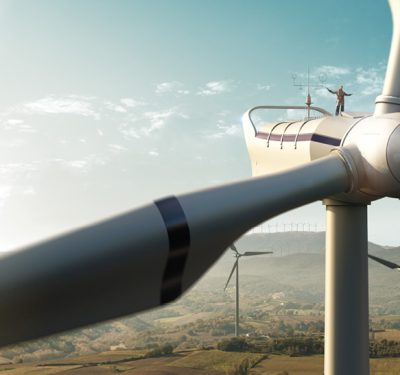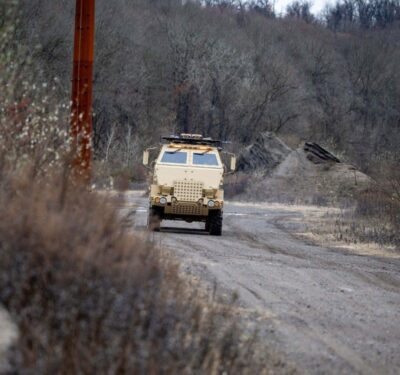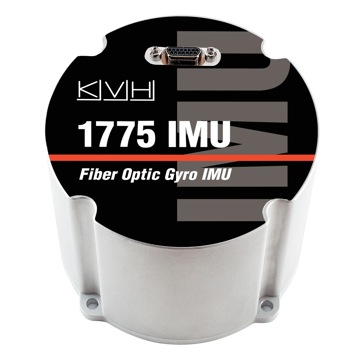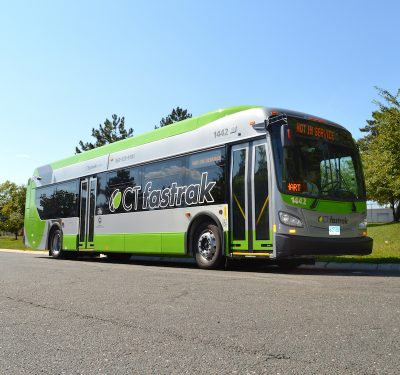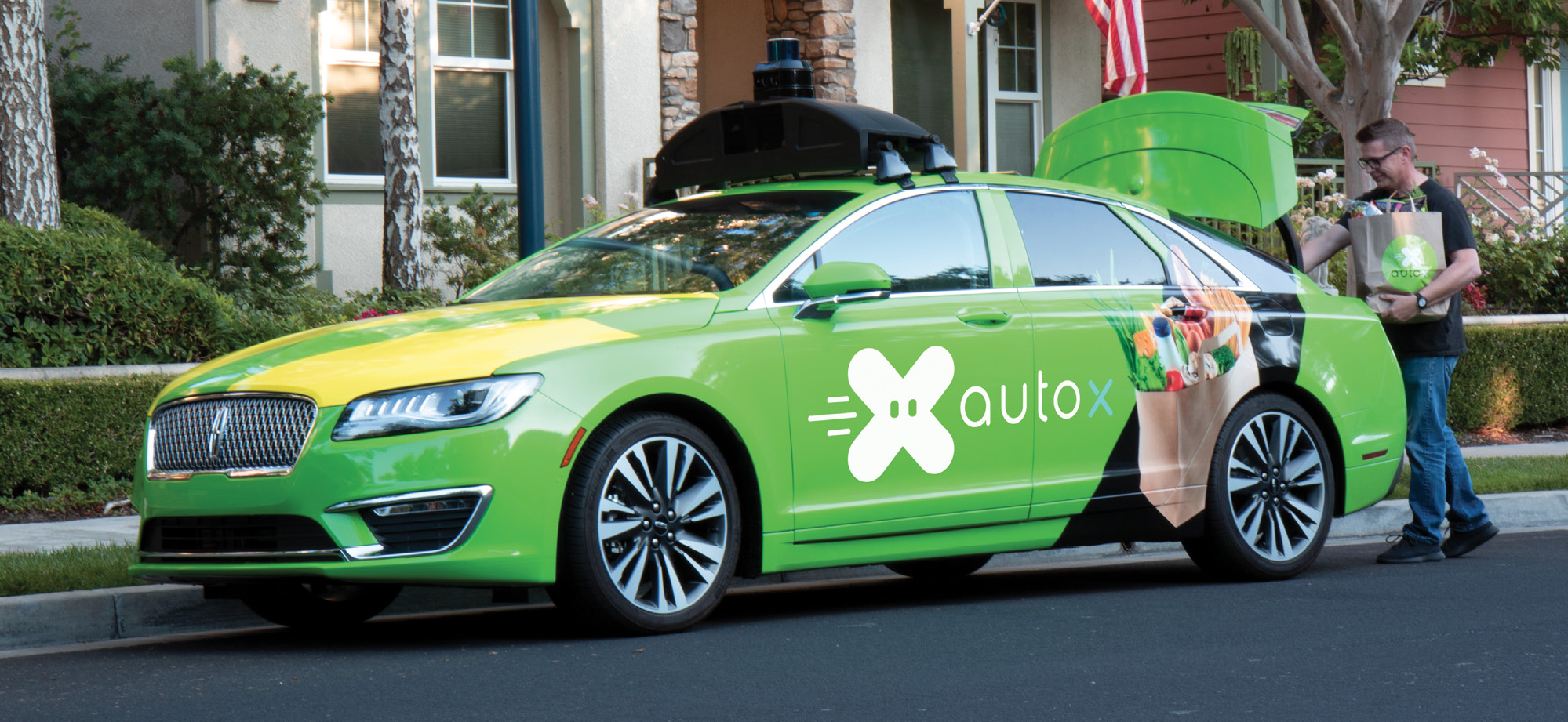
Today’s consumers typically don’t want to spend their free time wandering through grocery store aisles or visiting numerous other retailers for the everyday items they need. They want more convenient, stress-free options that make their shopping tasks easier, and many grocery stores are providing that through online ordering, curbside pickup and home delivery services. Soon, store leaders hope to have an even more advanced option to offer in the form of autonomous delivery vehicles.
Driverless delivery not only adds convenience for customers, it helps reduce costs for retailers and gives them more flexibility. This technology also can serve as an affordable way to deliver healthier food to those who don’t have easy access to a grocery store, or who have difficulties leaving their home. The benefits are many, and are why companies like Udelv, AutoX, Ford and Nuro are partnering with grocery stores and other retailers to start researching how customers interact with the technology and testing their systems.
“Autonomous delivery vehicles are safer, cheaper, and more convenient than current delivery methods,” Udelv Director of Business Development Adriel Lubarsky said. “Delivery is one of the largest costs for merchants, and for consumers, has generally been a frustrating experience. By introducing autonomous technology, we’re able to reduce overhead for merchants, meaning savings can be passed on to the consumer. It also means merchants can provide better service to customers with deliveries that fit into their daily lives, rather than disrupt them.”
Testing is in its early phases and is happening all over the country in places like California, Texas and Arizona. Oklahoma City’s largest grocery chain the Buy For Less (BLF) Grocery Company, recently announced an agreement with Udelv that will bring 10 autonomous delivery vehicles (ADVs) to the city next year, marking the biggest deployment of such systems to date. Yes, there are still plenty of challenges to overcome, but it’s likely only a matter of time before driverless delivery services become routine.
The Testing
Real-world testing for ADVs took off in 2018, with both startups and established companies launching programs. Ford, for example, set up its first self-driving business in Miami-Dade County, Florida, earlier this year and formed partnerships with Domino’s and on-demand delivery company Postmates. The goal with each partnership is to better understand the customer experience with food and parcel delivery in an urban environment, said Brian Wolf, head of autonomous vehicle business at Ford. These tests primarily gage how customers and merchants interact with the technology, and while the vehicles are designed to look like self-driving cars for research purposes, they’re driven manually and don’t have sensors inside recording data.
Other companies are actually testing autonomous vehicles in real-world situations. Nuro announced plans to deliver groceries for Kroger’s Fry’s Food division in Scottsdale, Arizona. via its self-driving fleet of Priuses in August, and AutoX began working with fellow startup GrubMarket to begin testing its self-driving vehicle in August as well. Udelv formed its first partnership with Delivery Guys and Draeger’s Markets in January, and before making the Oklahoma announcement in September, completed more than 700 deliveries for a variety of partners, including San Francisco-based florists, restaurants, auto parts warehouses and pharmacies.
AutoX has been testing two different models in San Jose, California, Chief Operating Officer Jewel Li said. The first involves a self-driving car that delivers orders to customers. The second is a model that would allow consumers to buy items directly from a shelf set up in the vehicle, and is what Li describes as a “completely new shopping experience.”
“Our mission is to make grocery delivery more convenient and affordable with improved customer experience,” Li said. “We plan to set the average delivery fee to be as low as $2.50 per order, significantly lower than a human driver.”
For now, a safety operator must be in the vehicles for all testing, but company leaders from both the autonomous vehicle and retail industries hope to prove to regulators and the public that the vehicles are safe enough to travel with only the items they’re delivering.
“While all deliveries to date have been completed with a safety operator in the vehicle, the delivery experience has been autonomous,” Udelv’s Lubarsky said. “The driver has no interaction, including with merchants loading compartments and customers accessing their deliveries.”

The Technology
The delivery vehicles come with many of the same features found in autonomous passenger cars. The AutoX system, for example, is a Level-4 self-driving vehicle equipped with artificial intelligence (AI) software and hardware, Li said. The AI relies on multiple sensors for redundancy and safety, including 360-degree surrounding view, high-resolution cameras and 360-degree surrounding view LiDAR. The vehicle’s perception system features computer vision and 3-D vision powered by advanced machine learning.
The vehicle collects data using the cameras, LiDAR, inertial measurement units (IMUs) and GPS to create high-definition maps of the area they’ll be making deliveries to, Li said. The vehicle uses that knowledge combined with observations from the perception system to plan the safest driving path.
“The maps are constantly updated to reflect changes such as construction or traffic dividers, even as the vehicles carry out deliveries,” Li said. “The resulting maps are reliable, robust and feature centimeter-level accuracy. In real time, our system understands the behavior of shared road users, pedestrians, cars, trucks, bikes, etc., and predicts the moving behavior of each road user. Our system is designed for continual improvement as more and more data are accumulated. Each mile traveled in the multi-sensor, 3-D simulator we built in-house as well as on real roads makes our system smarter.”
The Udelv vehicles also feature advanced LiDAR and camera technology, and are remotely operated from a tele-operations facility, Lubarsky said. This gives trained operators the ability to take over the vehicle if necessary.
The Oklahoma City team is working to identify where its operations center will be located, said Susan Binkowski, CEO of Esperanza Real Estate Investments and co-owner of the BFL Grocery Company along with her husband, Hank. It will be up and running by early 2019, which is when the 10 Udelv vehicles are scheduled to be delivered.
“If the vehicle encounters something new, it will stall for 10 seconds and beep to notify the tele-operations folks who are manning it,” she said. “It’s like a command center with huge televisions everywhere so the operators can actually see the vehicle. They can look at the total environment around where the vehicle is sitting.”
How It Works
The goal is to automate the process as much as possible, and that begins with the way the orders are made and dispatched, Delivery Guys CEO Armen Gasanyan said. Customers place their orders via the Draeger’s Market website or an app in one system, and a second system then creates a task that lets Delivery Guys know there’s an order. Through a third system, Udelv picks up the task and sends a reply back to the Delivery Guys team so they know the order is being taken care of and not to assign a driver.
A vehicle is deployed to the facility, where a picker loads it before it heads out to the assigned location. The delivery is made and Delivery Guys receives a notification that the task is complete. Orders usually arrive in about two hours, and customers also have the ability to place their order about a week out, Gasanyan said.
Delivery Guys helped Udelv design the vehicle’s compartments, which can hold a specific number of grocery bags so items don’t shift while they are en route, Gasanyan said. Each compartment is separated so the bags don’t touch each other, and automatically open for customers when they’re ready to retrieve their groceries.
Merchant and customer facing mobile apps make it possible to communicate with the vehicle through the cloud. Like with the Uber app, both customers and retailers can track the vehicle and know when it’s nearby and when it has arrived. Customers can even change the location and ask the vehicle to meet them at a gas station, coffee shop or wherever they happen to be, making the service that much more convenient, Susan Binkowski said.
With the AutoX service, customers can order fresh fruit and vegetables as well as other items through the mobile app, Li said. Perishables will be stored in a temperature-controlled environment throughout the ride. The company plans to expand their delivery service every few weeks and will soon begin delivering a larger variety of items.
To get started in Oklahoma City, where Udelv will soon begin delivering groceries from various locations including Uptown Grocery, Buy For Less, Buy For Less Super Mercado and Smart Saver, the vehicles will first 3-D map the area, much like they did in San Francisco when the company began working with Delivery Guys. While they’re still working out the details of exactly what the process will look like, the Binkowskis are excited for what the technology will do for Oklahoma City, and are proud to be leading the way for other grocers with this partnership.

The Benefits for Customers
The Binkowskis hadn’t really thought about incorporating driverless delivery into their business model until Susan Binkowski visited the Home Delivery World Expo in Atlanta earlier this year. Udelv had a vehicle on display at the show, and the team members who came along kept telling her she needed to check it out. She eventually did, and after talking with the CEO, decided these vehicles might be what the company needed to reach Oklahoma City residents who aren’t able to easily get to a grocery store.
“He (the CEO) explained the technology and I just thought, oh my goodness, how many more people could we reach,” she said. “Our typical driver can only handle a certain amount of deliveries a week, if this one vehicle could complete 120 deliveries a day, we could literally have a grocery store for everybody regardless of location.”
Some of the BFL stores already offer curbside pickup and delivery for their customers, Hank Binkowski said, and they can easily create synergies with the driverless vehicles and the services they already have in place—enabling them to better meet the community’s needs.
Driverless delivery also offers benefits for people who have difficulty leaving their homes, whether it’s a single mom trying to care for a sick child or someone with a disability who isn’t able to drive. Both Susan and Hank Binkowski also see a variety of other industries offering this service for their customers, including pharmacies to deliver medicine.
“In the past having stores open 24 hours a day to serve all the different demographics was commonplace,” Susan Binkowski said. “With these vehicles, you don’t have to keep an entire store open for everybody, but we theoretically can have groceries delivered at any time and any place.”
And of course there’s convenience for your typical customers. Rather than jumping in their car and heading to the store for their groceries, they can order them on an app and know they’ll arrive in a secure vehicle. This is also beneficial when ordering parcels, Gasanyan said, noting Delivery Guys also works closely with Amazon. Items will be brought to you wherever you are at a time that you choose. Customers won’t have to worry about packages being stolen if they are left at their doorstep, and they’ll never come home to a “sorry we missed you note” from a delivery driver ever again.
“Self-driving vehicles can transform cities in numerous ways, including providing an affordable and accessible transportation and delivery option, as well as being a part of the larger solution to solve mobility and congestion issues to help people move more freely,” Wolf said. “With a self-driving delivery service, packages will be able to move faster and people will have a much more efficient and effortless delivery experience.”
Benefits for the Industry
Cost savings is the biggest benefit for the logistics side, Gasanyan said. Not only will he not need to pay as many delivery drivers with this technology, he’ll also significantly reduce the costs associated with insurance.
While some might argue drivers losing their jobs is a negative, the technology will bring other opportunities for employment, Susan Binkowski said. These jobs will require more advanced skills and education, which is a bonus for the community. Of course there always will be a need for drivers; not everyone will want their goods delivered by a robot, either because they’re not able to retrieve the groceries themselves or they just prefer more traditional options. And, at least for now, the cars can’t deliver goods without a safety operator.
By law, Gasanyan isn’t able to keep drivers on the road for more than 10 hours, he said. That isn’t an issue with an autonomous vehicle. These vehicles can stay on the road for 24 hours, even making night delivery possible. So instead of splitting a 12-hour shift between two drivers, he can use a driverless car for the entire shift or to finish the night portion of the route.
There’s plenty of pressure on drivers to quickly finish deliveries so they can move on to the next one, and autonomous vehicles can help alleviate some of that, said Daniel Reiss, the Project Director of Home Delivery World, where Susan Binkowski first saw the Udelv ADV.
“We’re also able to deliver in places where we can have the vehicle show up and act as a mobile locker,” Gasanyan said. “It can sit in one place without straining the driver or having the driver sit there idle. The car arrives in a parking lot where someone is expecting a package and stays there until the customer arrives. There are a lot of applications on our side that will save us time and effort.”
Autonomous delivery also can help small, local businesses grow, Wolf said.
“A self-driving delivery service could help a small business that might not be able to afford a dedicated delivery vehicle or a medium-sized business that may have an underused vehicle that is a financial burden,” Wolf said. “These businesses could choose to use Ford’s self-driving business fleet instead, which can also allow them to apply human resources to other parts of the business.”
The Challenges
Regulation is one of the biggest challenges these companies will have to overcome, Gasanyan said. Legislation still needs to pass in most states and that could potentially slow progress.
The BFL team has received a lot of support from Oklahoma City officials, so while regulations still need to be sorted out, the Binkowskis are confident they won’t be a barrier. Officials had been researching these types of vehicles for a few years, and are excited to be on the forefront of actually implementing them. So while regulations can be challenging, working with cities that embrace the technology and see its benefits certainly helps.
Educating the public is another challenge, Gasanyan said. Some customers might not be willing to accept the technology yet because they’re worried it might take away jobs from the community or they just don’t like the idea of a robot delivering their groceries.
Then there’s the delivery experience, Lubarsky said. Companies have to determine the best, most efficient way for customers to interact with the vehicles when they arrive for a delivery.
“This digital interaction needs to cover contingencies like the customer not being home, rescheduling the delivery for a different time, or giving a housemate or neighbor a way to retrieve the delivery on a customer’s behalf,” Lubarsky said. “The only way we can understand this is by making real deliveries, analyzing the experience and focusing on improving and iterating, particularly by enhancing the functionality of our digital tools.”
The Future
As testing continues and research areas expand, more retailers will begin to see the value of driverless delivery vehicles, Lubarsky said. The grocery industry will lead the effort, with major postal companies, auto parts warehouses and lab clinics among the next to follow suit. As the technology matures, these industries will continue to innovative, finding currently un-imagined ways to use the vehicles, enhancing their benefits even further.
Driverless vehicles will reduce transportation shipping costs for the companies who use them, Reiss said, and will create new, exciting jobs for the people who choose to get involved with the industry. Change is inevitable, with the logistics industry evolving from horse and buggy, to bike to delivery driver and now to ADVs.
While testing is going well, Gasanyan doesn’t see ADVs going mainstream for another five to 10 years. In the meantime, companies will continue to test with different types of products such as mobile vending machines that bring preset items so the vehicle doesn’t have to travel back and forth. These vehicles could serve in static places like bus stops and major transportation hubs. Meal deliveries are another great use case for ADVs, but that also requires interaction with the customer. Details of the best way to complete deliveries while also offering a positive customer experience still need worked out. Current testing should help with that, as well as lead to more public acceptance.
“The public has to be ready and I don’t think the public is ready,” Gasanyan said. “The technology is there and it’s working. We’re seeing it working but we have to educate as much as possible.”
As young consumers grow up over the next few years, Gasanyan believes consumer acceptance also will grow. These customers are used to ordering items online and will likely prefer to have those items delivered—and probably won’t care if they come via human delivery driver or robot.
Last mile delivery is one of the earliest, large-scale applications of self-driving cars, Li said, and recent testing also can help move the driverless passenger vehicle industry forward.
Because there are no humans in the car it’s a safer use case, Lubarsky said. There’s no ethical question about saving a car full of people or injuring pedestrians in an accident. Keeping people safe is the first priority; it’s not a big deal if the eggs end up broken or if there’s some spilt milk.
“If you look at history, everything always started with freight,” Susan Binkowski said. “Vehicles carried freight before people. Elevators carried freight before people. All these things just carried products first. I think that’s a really good way to look at this as an industry. The only risk is stuff.”


